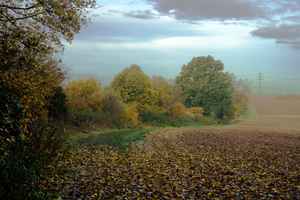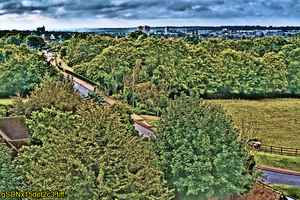I work from Nikon NEF files, rather than Canon CR2, but I doubt that makes any difference. (The following commands are Windows 7 batch scripts.)
You can use IM to convert a CR2 file into something more useful:
IM uses dcraw to read the CR2 file. I prefer to use dcraw directly:
Code: Select all
dcraw %DCRAWNR% -H %hNum% -W -g 1 1 -6 -T -c %DCRAW_PARAM% %RAW_WB% %1.nef >%BASE%.tiff
... where:
%DCRAWNR% is "-n X" where X is a noise reduction depending on the camera and ISO rating;
%hNum% is typically "0";
%DCRAW_PARAM% is typically "-w" to use the in-camera white balance, or %RAW_WB% is a specified white balance.
Then I correct geometric distortion and transverse chromatic aberration, trim off the right edge (because my camera puts weird pixels there), give it a very small unsharp mask, and convert to sRGB.
A single image may have detail in both the shadows (eg vegetation) and highlights (eg sky), with nothing important in the middle. I can increase the contrast at the extremes with "+sigmoidal-contrast". A more extreme effect involves partitioning the image into two separate images: one for the shadows, the other for highlights. Then each is processed, stretching contrast, perhaps to make the lightest parts of the vegetation white while the darkest parts of the clouds become black. These are then merged. I like this when done conservatively, and dislike it when taken to extremes, but each to his own.


If you want to simulate +1EV and -1EV, you might do tests with your camera to see what the actual effects are. Or you might use something very simple*, eg:
Code: Select all
convert in.tiff
( +clone -level 0,90%% -write plus1.tiff -delete )
-level 10%%,100%% minus1.tiff
* EDIT: Do this in sRGB space, not RGB. My Nikon D800 has a 10% shift per stop, except in the toe area where the values are slightly higher. Other camera models will have a different shift.
EDIT 2: Here is that final command again, slightly improved so all the tones shift by 10%.
Code: Select all
convert in.tiff
( +clone -level -10%%,90%% -write plus1.tiff -delete )
-level 10%%,110%% minus1.tiff
I don't know if any of this helps you. Feel free to ask.

